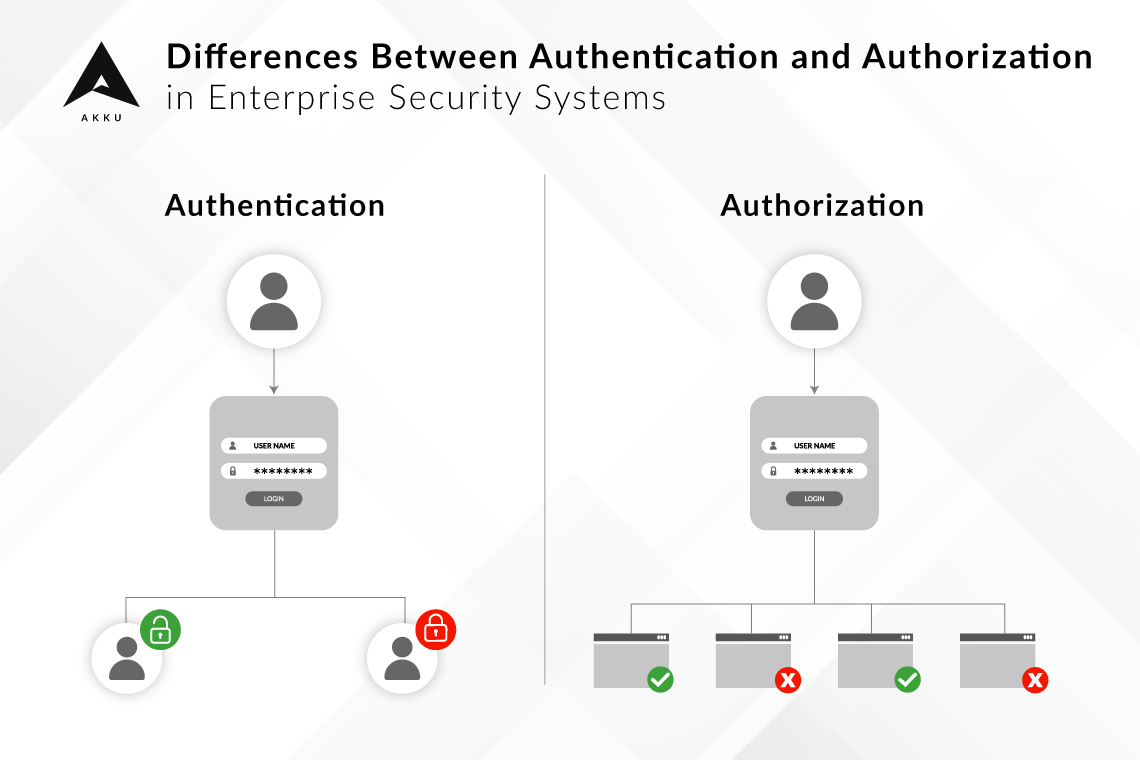Authentication and Authorization, often referred to by their shorthand names – authn and authz – serve distinctly different purposes. Understanding the difference between them is crucial for designing robust access control systems, enforcing Zero Trust architecture, and ensuring compliance in high-risk environments.
This blog breaks down the fundamentals of authentication and authorization, explores how they work independently and together, and highlights their real-world applications in enterprise IT. So, what are authentication and authorization? Which happens first: authorization or authentication? Let’s dive into these questions and more.
Understanding Authentication and Authorization
What is Authentication?
Authentication is the process of verifying the identity of a user or system. It answers one fundamental question: Are you who you say you are?
In practice, authentication involves credentials, like passwords, biometrics, OTPs, or cryptographic keys, used to confirm identity. It’s typically the first step in any access control process. Without authentication, no access decision can be trusted.
Examples include:
- Entering a password to log into a laptop
- Using fingerprint or facial recognition on a mobile device
- Logging into a corporate application using SSO
What is Authorization?
Authorization comes after authentication and determines what resources or actions an authenticated user is allowed to access.
While authentication confirms identity, authorization confirms permissions. It defines roles, privileges, and access rights based on organizational policies.
Examples include:
- A manager is permitted to access payroll records, while an intern cannot
- A user is allowed to view a dashboard but not edit it
- Admins have full access to the system, while standard users are restricted
In short, authentication proves who you are; authorization defines what you’re allowed to do.
Authn vs Authz: Key Differences Between Authentication and Authorization
1. Core Purpose and Functionality
- Authentication: Verifies identity
- Authorization: Grants or denies access rights
While authn and authz are closely linked, their core purposes are fundamentally different. One is about identity; the other, is about entitlement.
2. Workflow and Process Sequence
- Authentication always happens first
- Authorization only happens after successful authentication
Which happens first, authorization or authentication? The answer is that authentication is always first.
3. Types of Data Involved
- Authentication uses identity data – usernames, passwords, tokens, biometrics
- Authorization uses access control data – roles, permissions, group policies
Each process evaluates different layers of user information to make decisions.
4. Impact on User Experience
- Authentication affects login experience – MFA prompts, password rules, SSO login time
- Authorization affects access experience – what the user can see or do once logged in
Poor implementation of either can frustrate users or compromise security.
5. Operational Timing and Order
- Authentication is a real-time gatekeeper at login
- Authorization is ongoing and enforced with every resource or API request
Together, they ensure both the front door and every internal door are secure.
6. System and User Visibility
- Authentication is often visible to users (e.g., login screens, 2FA)
- Authorization is typically behind the scenes (e.g., access denied messages, greyed-out options)
This difference affects how security measures are perceived by users.
7. Interdependencies and Prerequisites
- You cannot be authorized without first authenticating
- But you can be authenticated without necessarily being authorized for anything beyond basic access
This interdependency is crucial for designing layered security systems.
8. Relevant Protocols and Industry Standards
- Authentication protocols: SAML, OAuth 2.0 (authentication flows), OpenID Connect, LDAP, RADIUS
- Authorization protocols: OAuth 2.0 (scopes and permissions), RBAC (Role-Based Access Control), ABAC (Attribute-Based Access Control)
Understanding protocol boundaries helps avoid configuration errors and security loopholes.
9. Practical Example Scenarios
Let’s bring it all together with a real-world example:
- A user logs into their enterprise portal with their credentials → Authentication
- The system checks their role and allows them to access only the HR dashboard, not Finance → Authorization
Another example:
- A developer logs into GitHub → Authentication
- They can push code only to repositories they’ve been given access to → Authorization
Despite their technical overlap, authentication and authorization play distinctly different roles in enterprise security. Confusing or conflating the two can lead to vulnerabilities, poor user experiences, and audit failures.
Understanding the difference between authentication and authorization is not just about semantics – it’s about building a security architecture that can scale with your business, adapt to modern threats, and maintain control in an increasingly complex digital environment.
Take the Next Step: Secure Your Organization with Akku
In a world where identities are the new security perimeter, your access control strategy must go beyond basic authentication and fragmented authorization rules.
Akku offers a unified, scalable, enterprise-grade platform to manage both authentication and authorization policies. From enforcing multi-factor authentication and adaptive access controls to defining fine-grained user permissions, Akku helps you take control where it matters most.
Explore how Akku can modernize your security architecture.
Contact us today!











